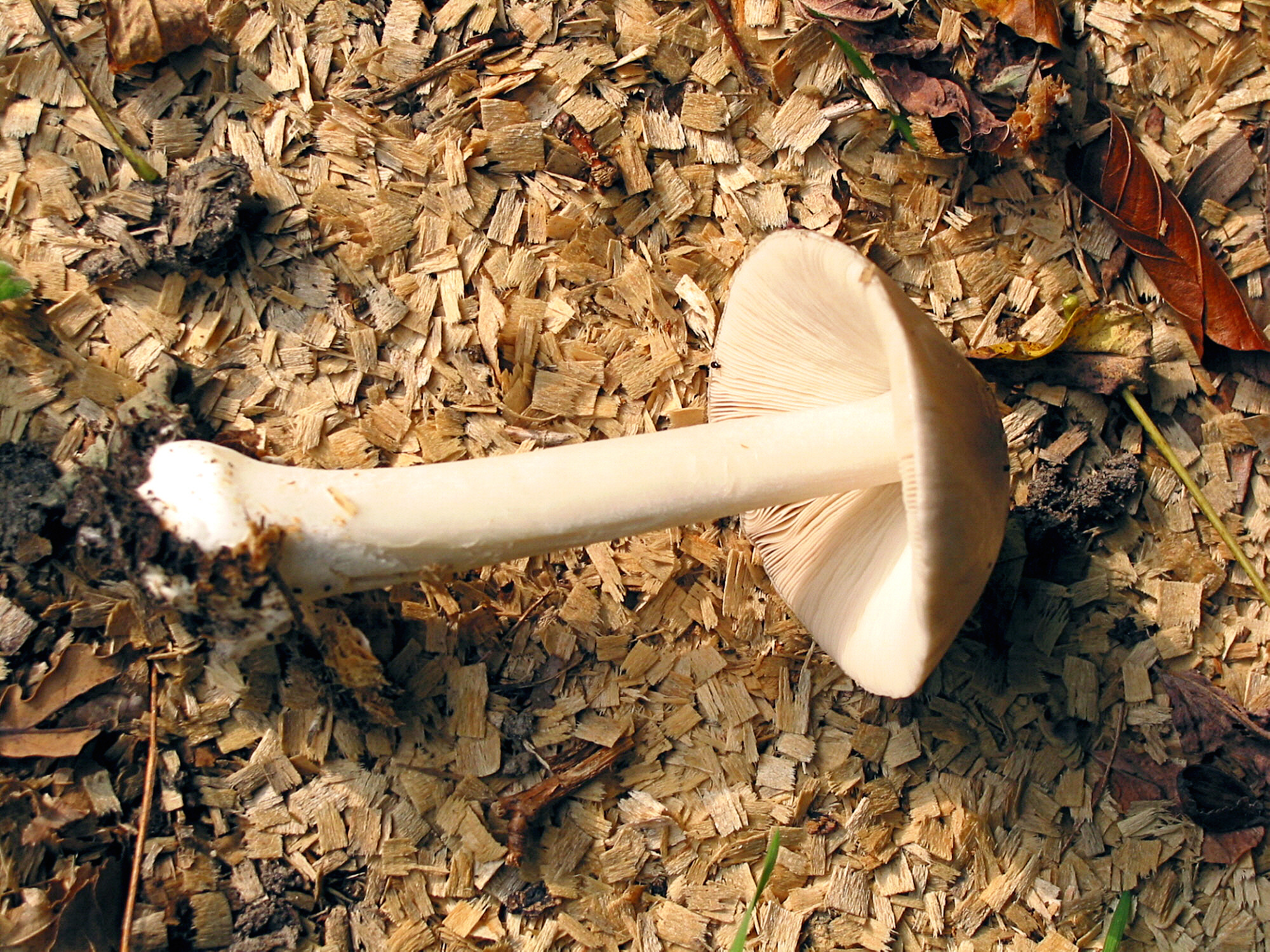- Volvariella
Taxobox | name = "Volvariella"

image_width = 240px
image_caption = "V. gloiocephala"
regnum =Fungi
divisio =Basidiomycota
classis =Agaricomycetes
ordo =Agaricales
familia =Pluteaceae
genus = "Volvariella""Volvariella" is a
genus ofmushroom s with pink gills and spore prints. They lack a ring, and have an Amanita-like volva at the stem base. Some species ofAmanita look similar, butAmanita has white spores and often have a ring. Since the gills of young "Volvariella" are white at first, they are more easily mistaken for "Amanita ".Many sources list "Volvariella" as a member of the
Pluteaceae family, but recent DNA studies have revealed that "Pluteus " and "Volvareilla" evolved separately and have very different DNA. These studies show that "Volvariella" is very closely related to "schizophylloid" mushrooms like "Schizophyllum commune ". [Moncalvo, J. M., et al. (2002). One hundred and seventeen clades of euagarics. Molecular Phylogenetics and Evolution 23: 357–400. An online version of this paper is available at: [http://www.biology.duke.edu/fungi/mycolab/publications/117clades.html] ]Some species of "Volvariella" are popular edibles in Europe, accounting for 16% of total production of cultivated mushrooms in the world.
"
Volvariella volvacea ", well known as the "paddy straw mushroom," is cultured in rice straw in thePhilippines andSoutheast Asia . This species also favours wood chip piles. Unfortunately, it is easy to mistake the death cap mushroom ("Amanita phalloides "), as well as some other "Amanita " species, for this edible species due to similarities in appearance. This mistake is the leading cause of lethalmushroom poisoning in theUnited States . "Volvariella" and "Amanita" cannot be distinguished in the early "button stage", that, for many, is considered the best stage to collect "Volvariella" for consumption. Like "Amanita", the paddy straw mushroom has a "volva", or universal veil, so called because it is a membrane that encapsulates the entire mushroom when it is young. This structure breaks apart as the mushroom expands, leaving parts that can be found at the base of the stalk as a cup-like structure.List of Species
*"
*"
*"
*"
*"
*"
*"
*"
*"References
* Key to the genus Volvariella [http://www.mushroomexpert.com/volvariella.html]
Wikimedia Foundation. 2010.
